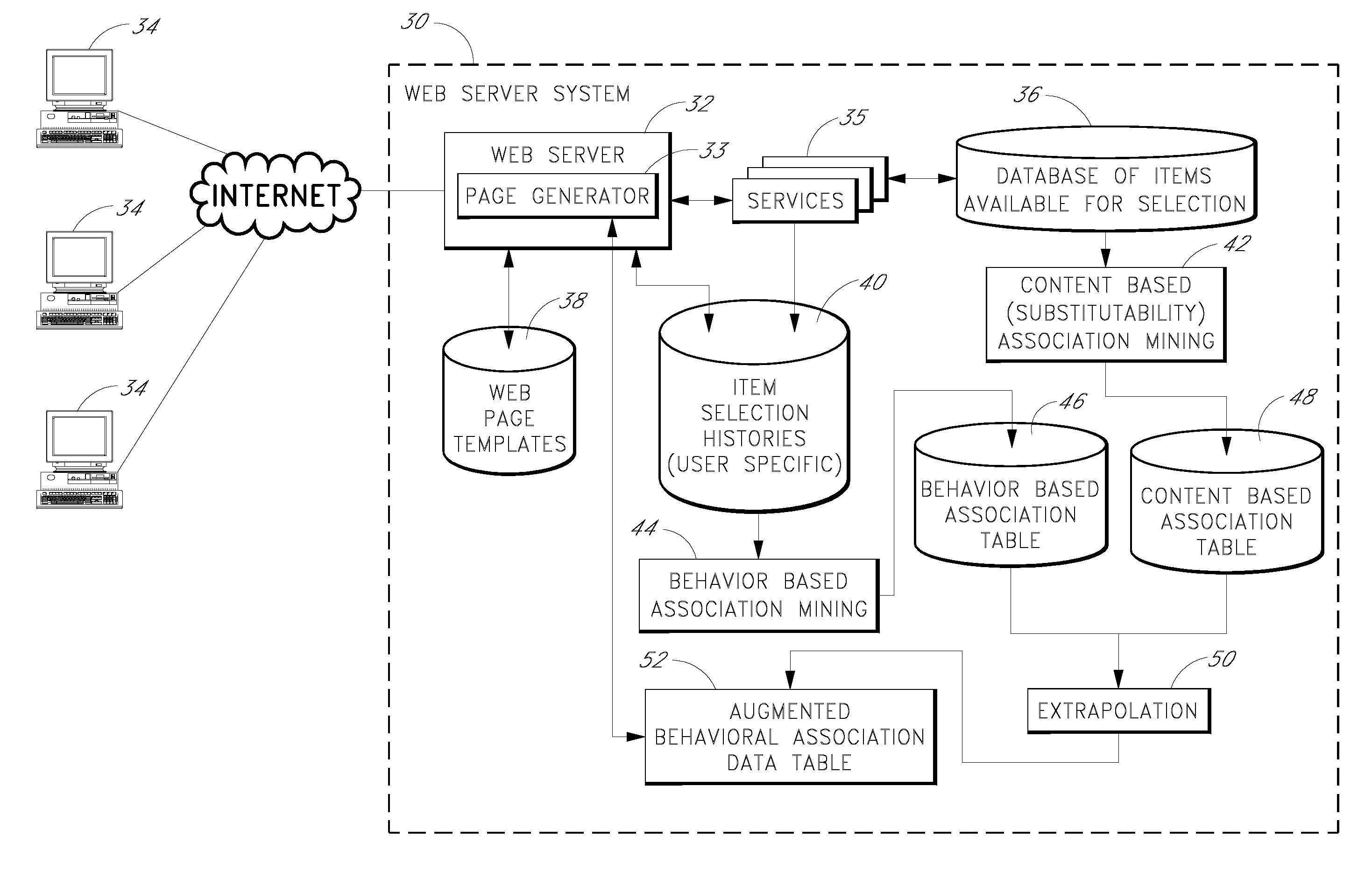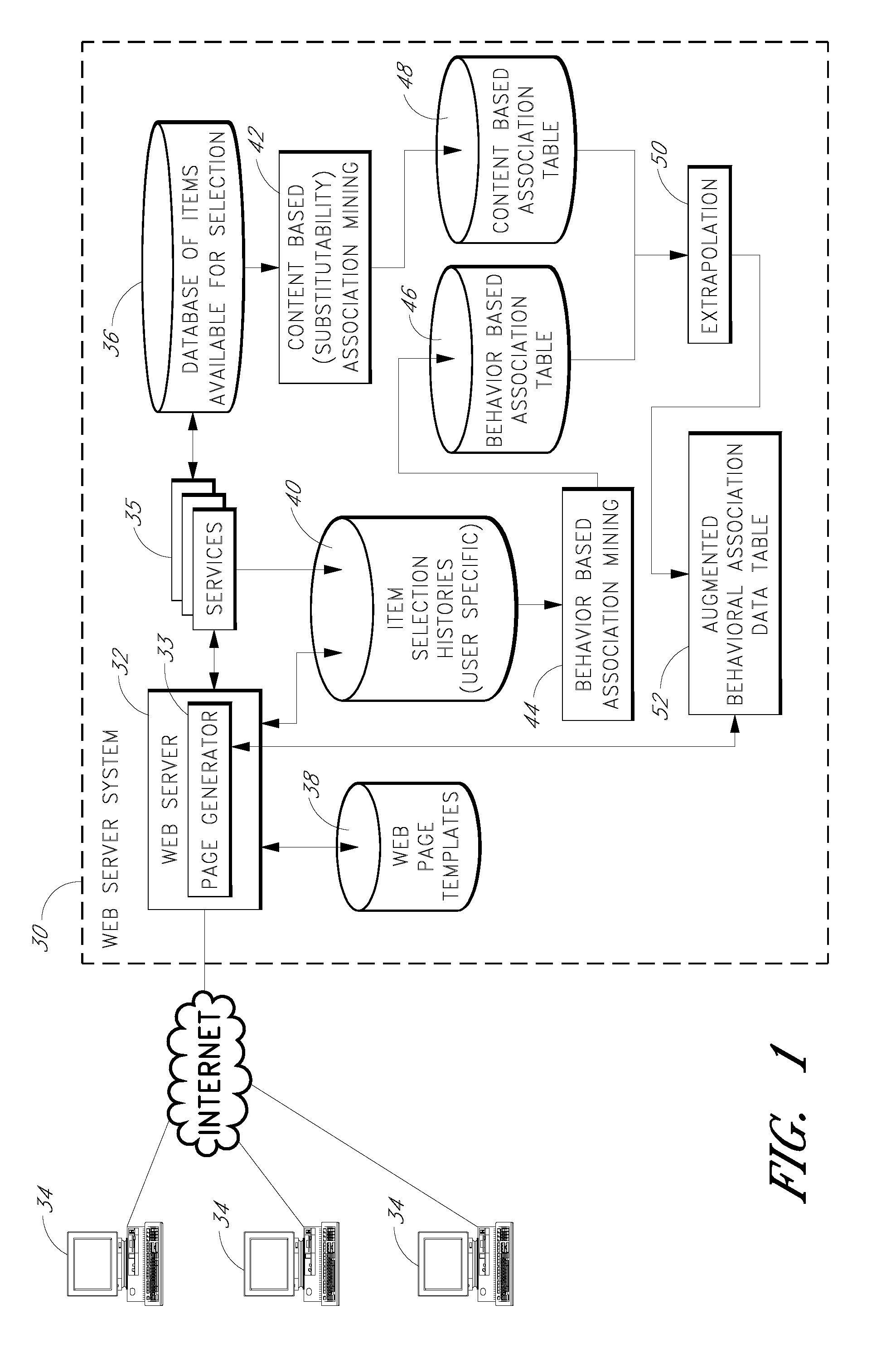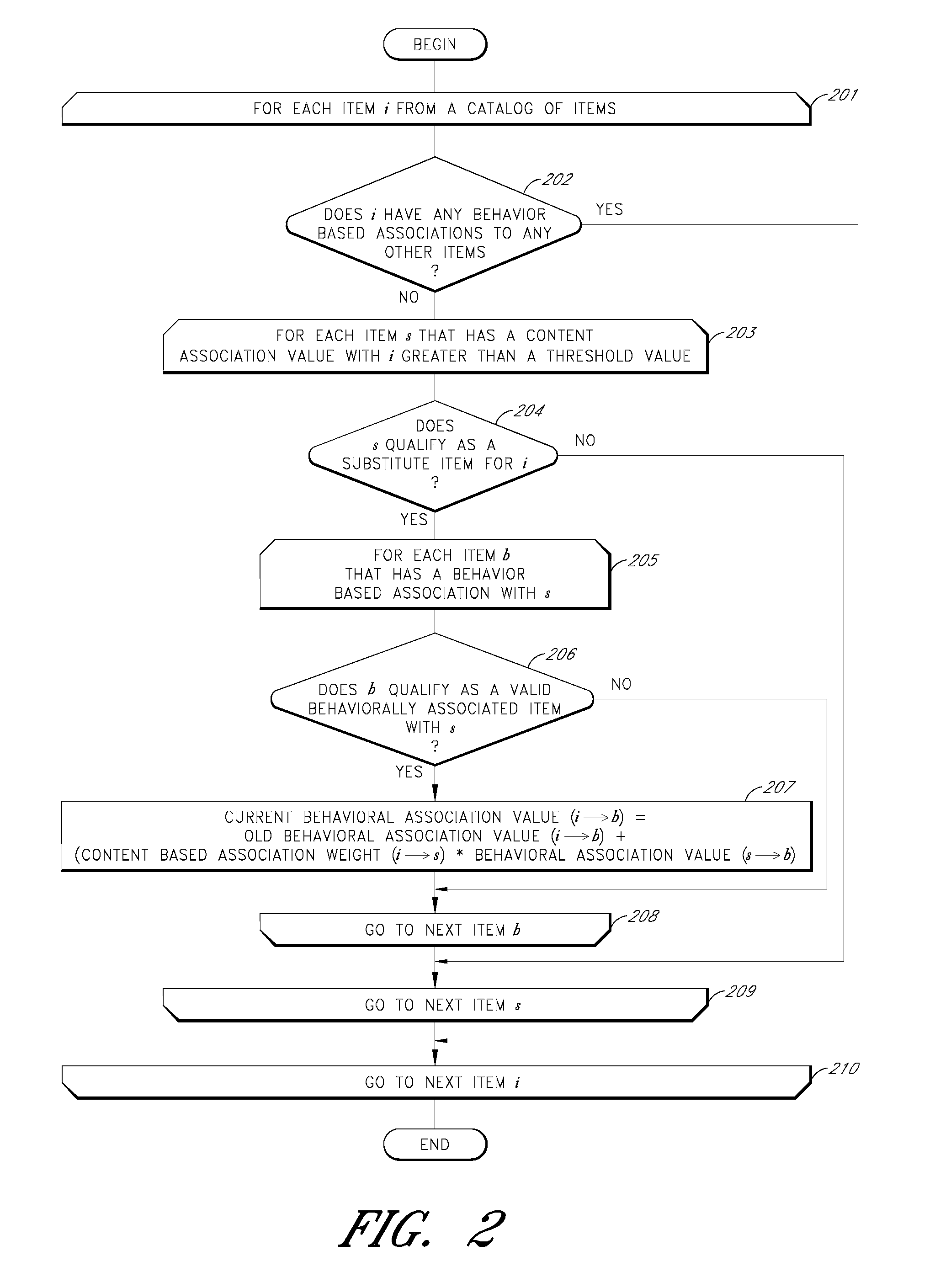Extrapolation of behavior-based associations to behavior-deficient items
a technology of behavior-based associations and items, applied in the field of data mining methods, can solve the problems of self perpetuation, unpopular new and general unknown items, and insufficient quantity of behavioral data collected for a particular item to create behavior, and achieve the effect of high click-through ra
- Summary
- Abstract
- Description
- Claims
- Application Information
AI Technical Summary
Benefits of technology
Problems solved by technology
Method used
Image
Examples
Embodiment Construction
[0026]Specific embodiments of the invention will now be described with reference to the drawings. These embodiments are intended to illustrate, and not limit, the present invention. The invention is defined by the claims.
I. Electronic Catalog Embodiment
[0027]FIG. 1 illustrates an embodiment in which the invention is employed for purposes of detecting associations between items represented in a browsable electronic catalog of items. The detected associations between items may be used for various purposes, such as to supplement item detail pages with lists of related items, and / or to generate personalized recommendations for particular users. See, e.g., U.S. Pat. No. 6,912,505, the disclosure of which is hereby incorporated by reference.
[0028]As is common, the electronic catalog in this embodiment contains item content supplied by many different entities. For example, some of the item content may be supplied by a variety of different marketplace sellers, as described in U.S. Pub. 2003...
PUM
 Login to View More
Login to View More Abstract
Description
Claims
Application Information
 Login to View More
Login to View More - R&D
- Intellectual Property
- Life Sciences
- Materials
- Tech Scout
- Unparalleled Data Quality
- Higher Quality Content
- 60% Fewer Hallucinations
Browse by: Latest US Patents, China's latest patents, Technical Efficacy Thesaurus, Application Domain, Technology Topic, Popular Technical Reports.
© 2025 PatSnap. All rights reserved.Legal|Privacy policy|Modern Slavery Act Transparency Statement|Sitemap|About US| Contact US: help@patsnap.com



